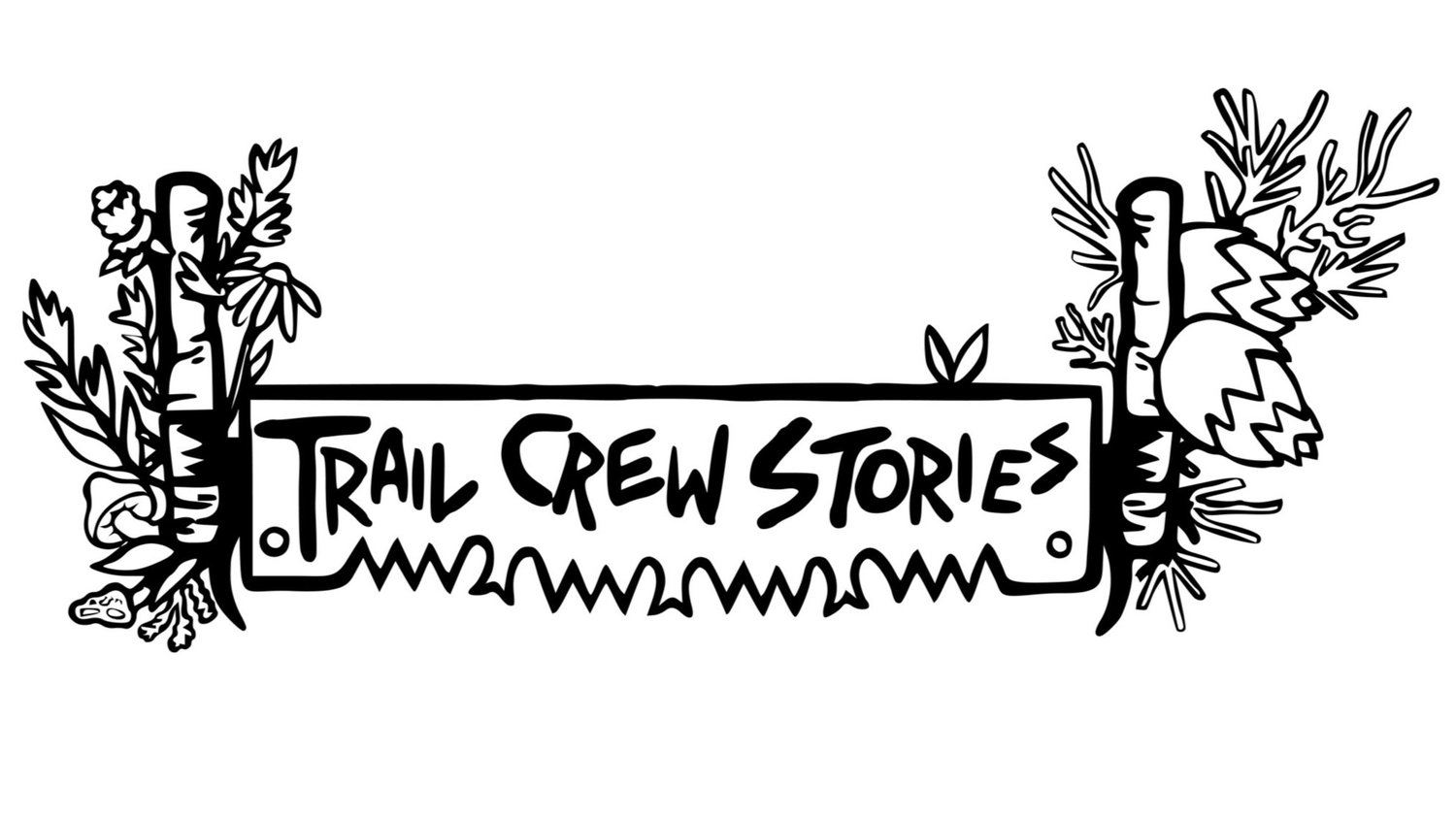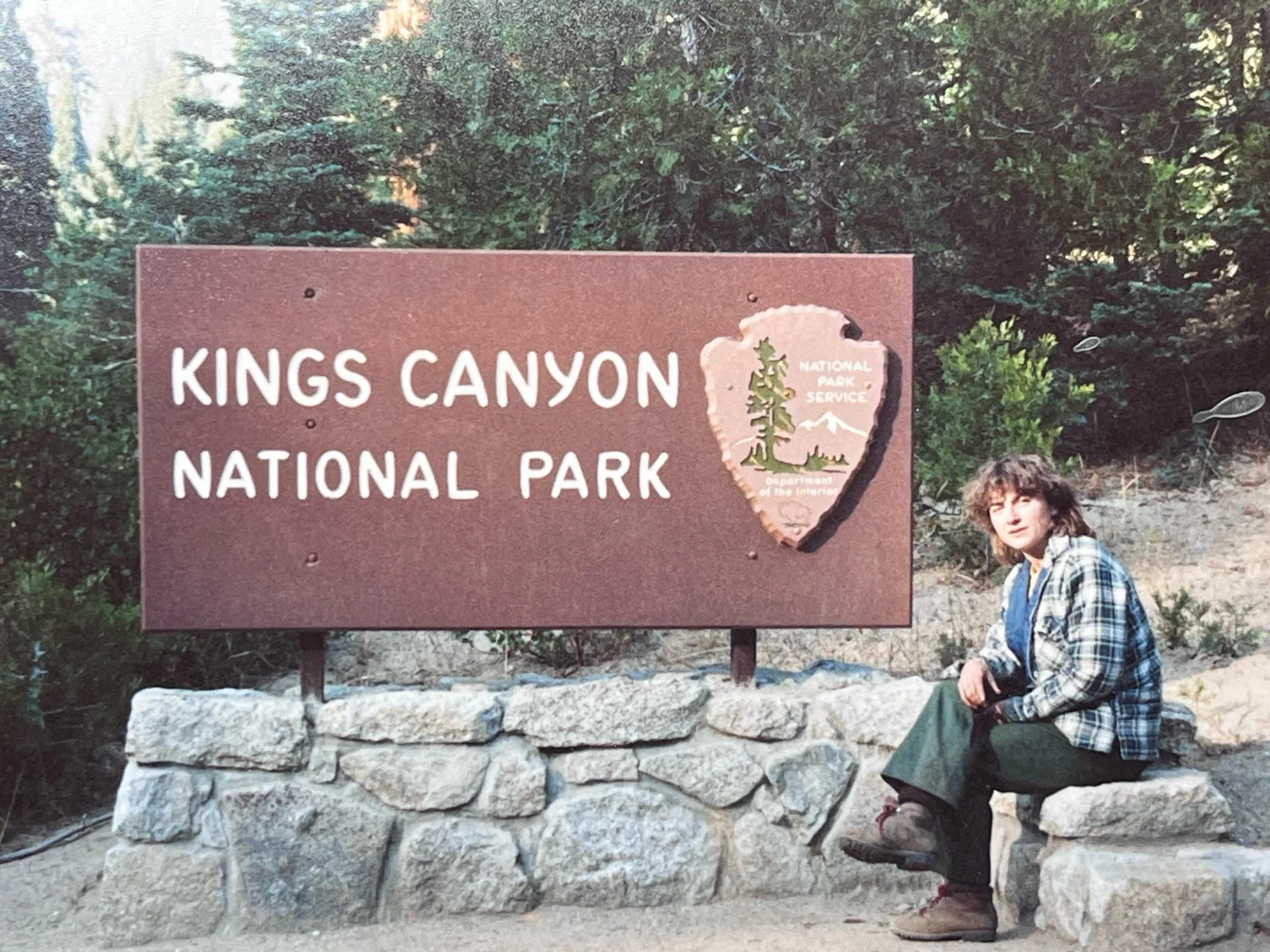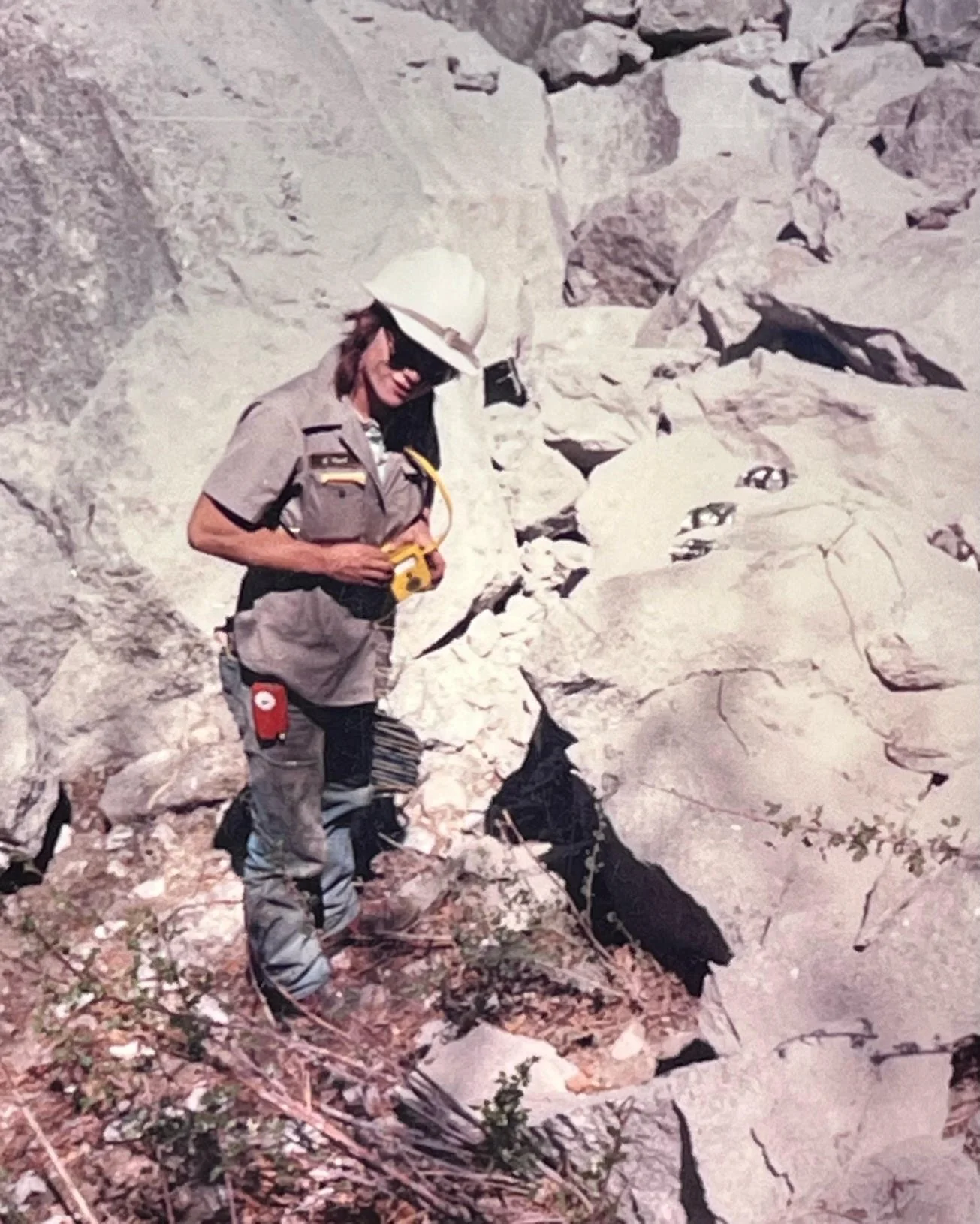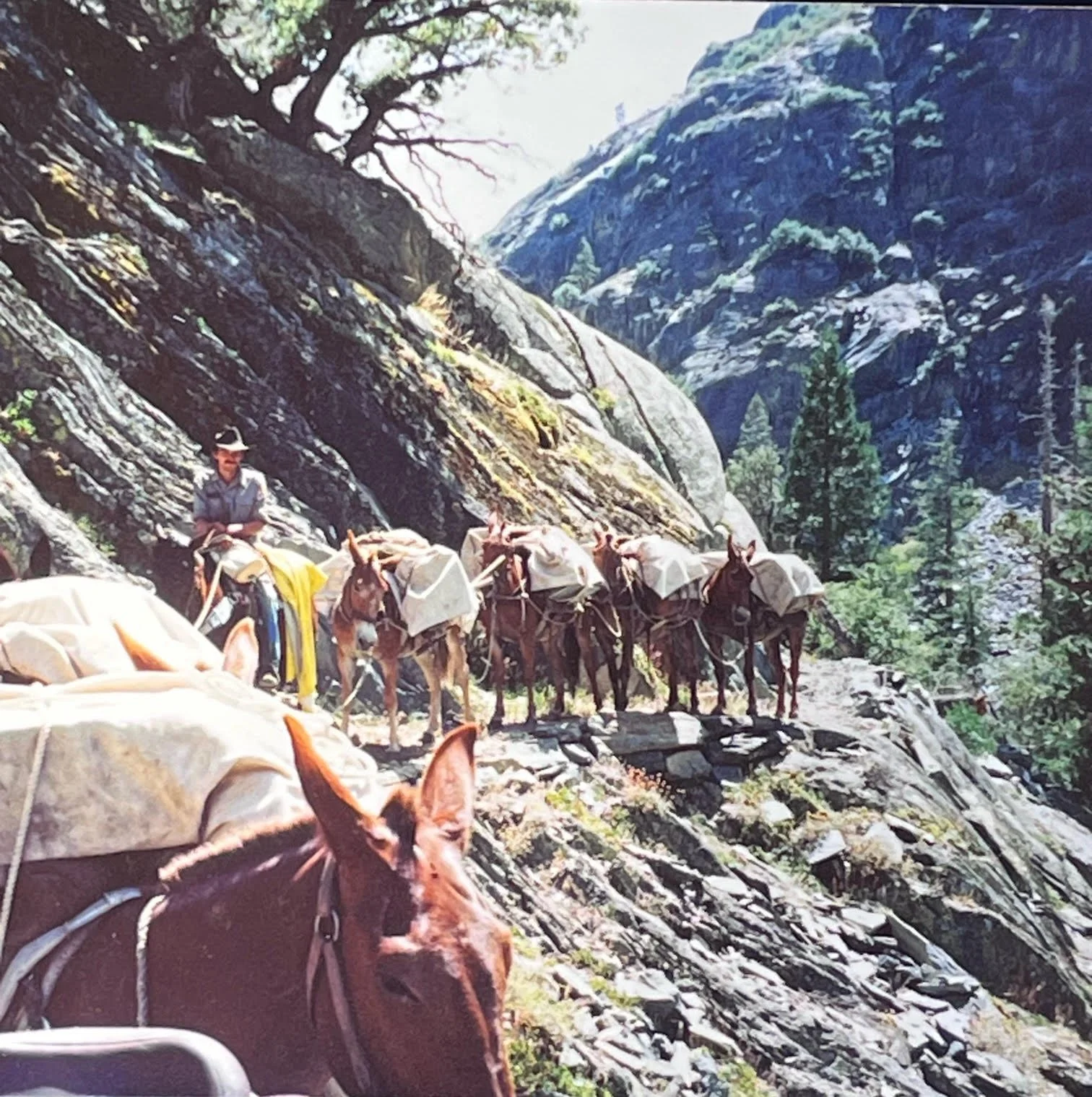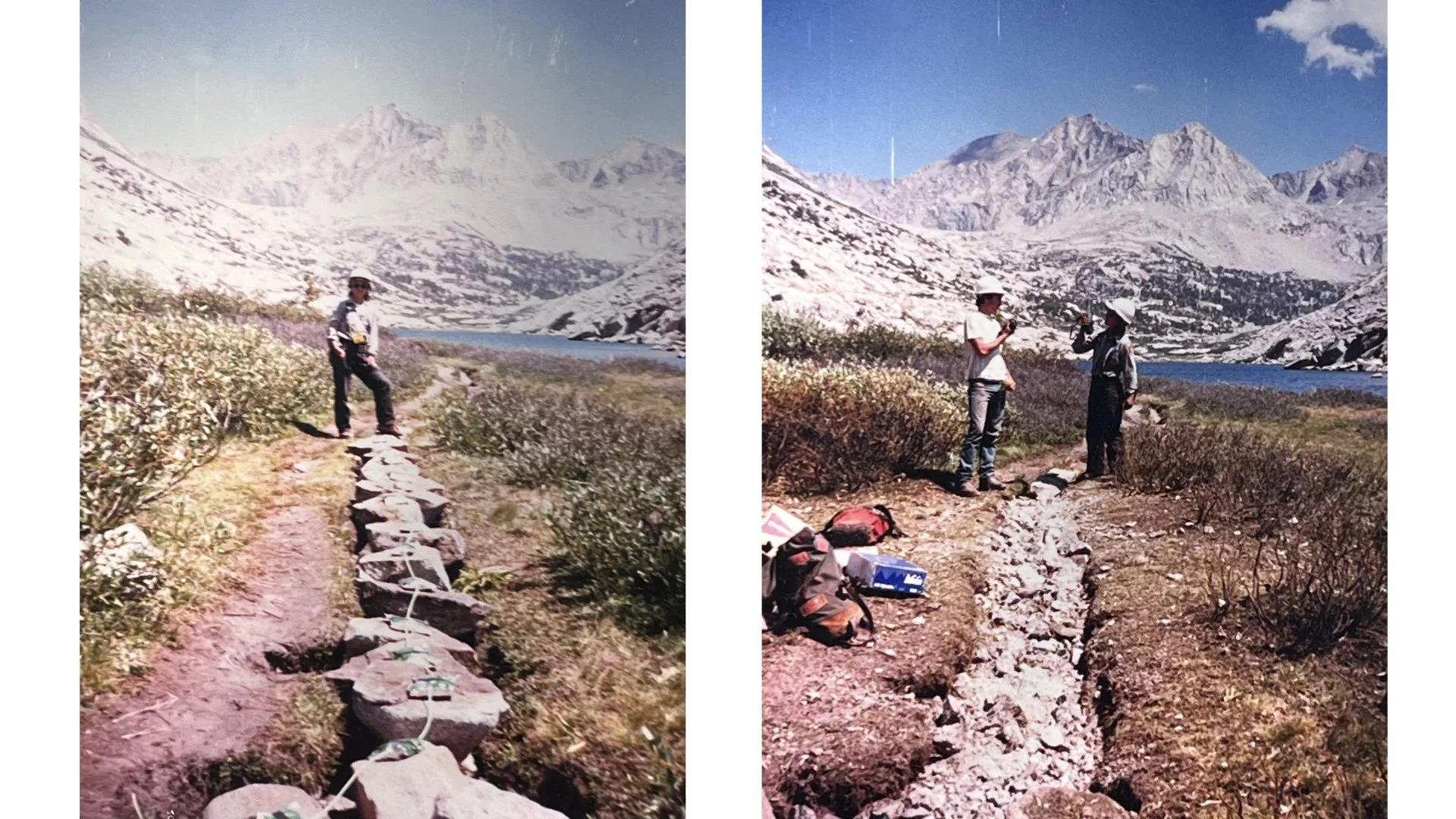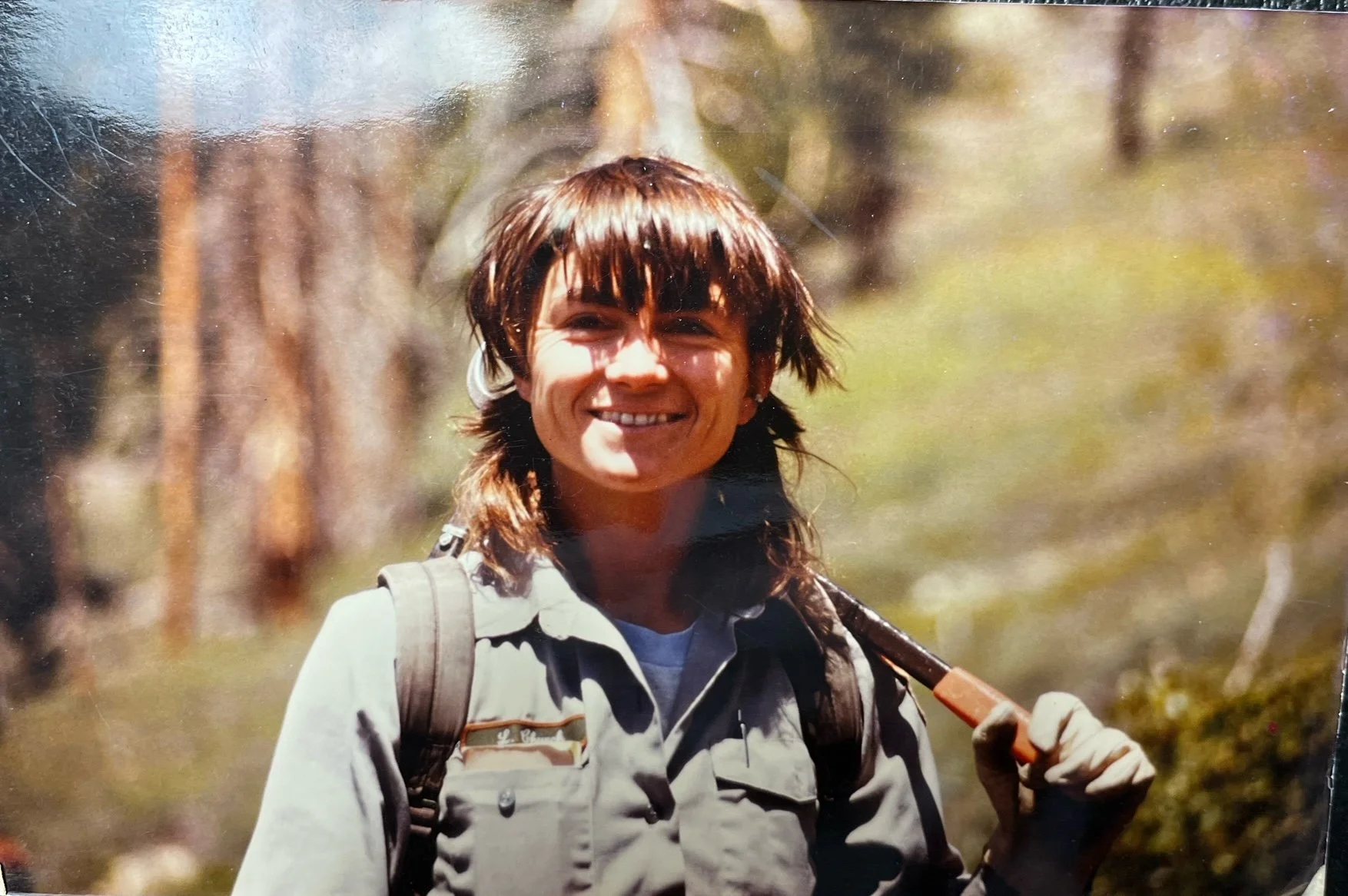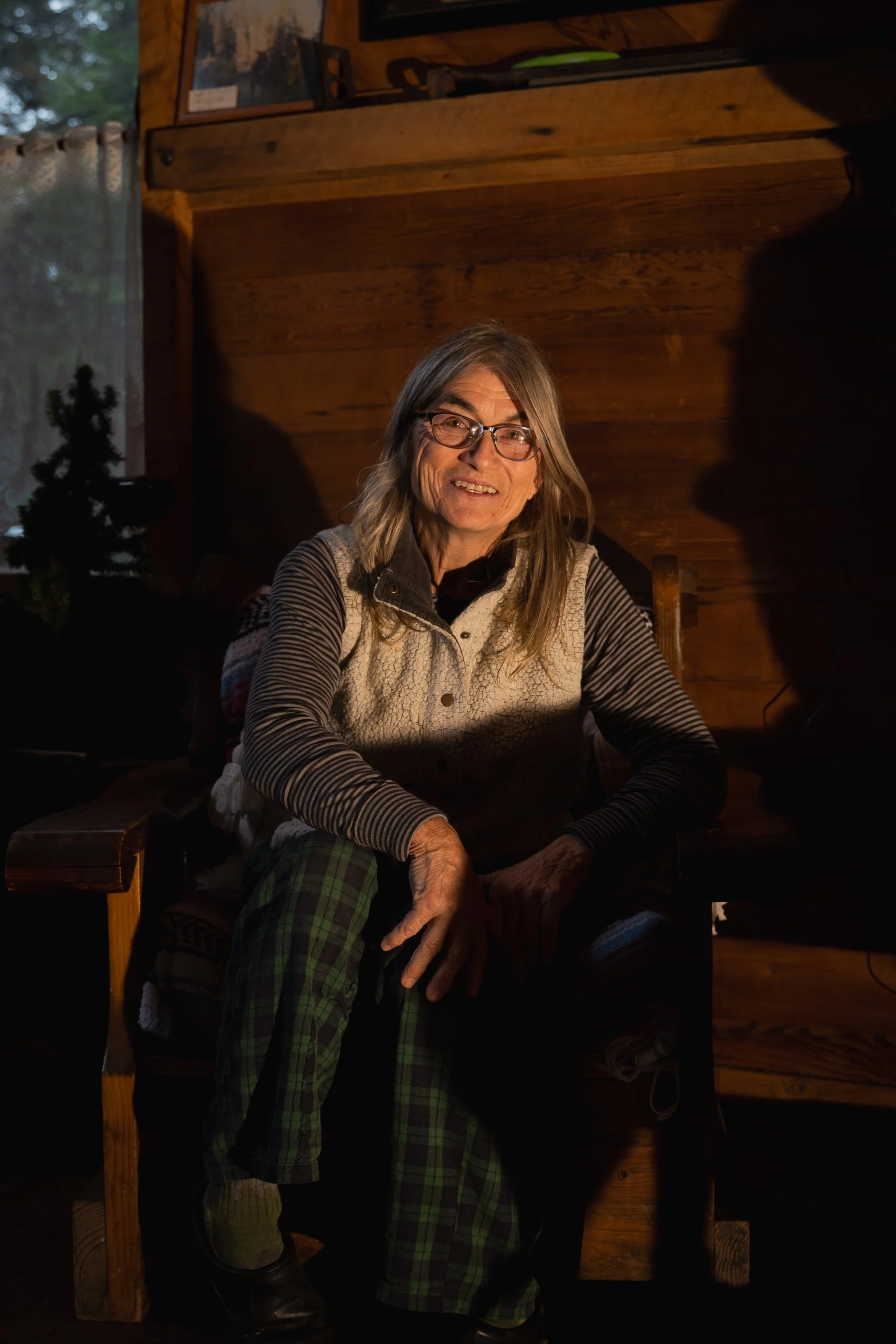Laurie Aldrich: Hardass to Badass
“You gotta talk to Laurie,” Jake told me, “she’s a badass.”
I had just arrived at a remote pack station near Sequoia and Kings Canyon National Parks, where trail crews from both parks were trickling in for the “Trails End,” the annual end-of-backcountry-season celebration. I spotted Laurie almost immediately, as she sat by the campfire, surrounded by younger trail folks leaning in, listening to her speak. She’s softspoken but commands a presence, and is a walking encyclopedia of stories from Kings Canyon. Her trails career began in 1980, well before most– perhaps all– of the other partygoers had even been born.
When I found a moment to chat with her about the Trail Crew Stories project, she was curious, and a little hesitant. But she agreed to talk, and we retreated to a quiet cabin where a wood stove crackled and the rain pattered gently on the tin roof. A few other folks came to sit and listen quietly to Laurie share some of her story.
Joe Gibson: Give me a quick rundown of your trails career.
Laurie Aldrich: My name's Laurie Aldrich, it used to be Laurie Church, and I started trails in 1980 with the California Conservation Corps. I went to Hetch Hetchy in Yosemite.
In 1981, I was a crew lead with the CCC in Kings Canyon. The following year, 1982, I got picked up by the park as a maintenance worker in Kings. In ‘84 and ‘85, they picked me as a leader to do a two-year project in the Middle Fork where there was a series of washouts.
That's when a guy named Mike Shields came to the park as the facilities manager. He is an expert in blasting, in high lines, in soil composition, soil integrity, all those things. He was training us, so David Karplus and I both started blasting training in ‘84.
We both became blasters in training for three years and got a lot of experience blowing shit up with Mike, who was one of the best. He designed the NPS-65 Blasting Safety Program.
After that two year project, I got a stock crew. That's my favorite part of the backcountry, is riding horses through it and working with stock. I stayed in the Middle Fork almost my whole career, twenty years up there.
2001 was when I officially left, cause after 20 years I was pretty worn out. My back, toes, thumbs, neck.
Photo courtesy of Laurie Aldrich
JG: What is the project you’re proudest of?
LA: Definitely those first two years in the Middle Fork. I was a new leader, and it was terrifying.
We did some massive reroutes. We had a 150-foot bench blast where we had three rows of holes, six feet deep on the inside, one foot deep on the outside. The middle row was whatever it took to blast a bench to get around the worst washout. That was a six week project. We drilled about 21 days straight because the blaster came in on the helicopter, so we had to be all prepared.
We'd have hundreds of holes drilled and then the blaster would come out. It’s funny, Mike Shields, this amazing guy, was afraid of heights. And when you're trying to bench a blast, you're on the side of a cliff. We were all tied in on ropes. David Karplus was instrumental because he was a climber, so he had all that knowledge about our safety lines.
We were running back and forth over a 75-foot drop. That project was amazing. It took us two years. We did get the trail open and passable. We did some beautiful work. There were only like four or five of us on that crew.
I'm really proud of that bench blast. That took sustained effort and dedication from the crew. We all learned a lot. That trail had been closed for three years because of the washout. So we got it open in ‘85.
Photo courtesy of Laurie Aldrich
View of the section of trail that was bench blasted in 1984-1985.
Photo courtesy of Laurie Aldrich
JG: Any harrowing tales from the backcountry?
LA: So Ned, my husband, joined trails in 1990. He was on my crew where I was leading the C’s up at Lake of the Fallen Moon.
We were spiking over Granite Basin, getting some afternoon thundershowers. It was lunchtime, and we were working on a pass over 10,000 feet. We got this hellacious lightning and thunderstorm.
Granite Basin is solid rock, so there's very little soil and water just runs off. When it’s raining, it’s actually a great time to go look at trail work, because you see what the water's doing. But we were just sitting there, waiting it out, and we're seeing lightning below us.
We dropped all our tools and went back to camp. It was like a mile. The tarp was down, broken. Everybody's tents were flooded. Our thousand-dollar Katadyn water filter was gone. Later we found it downstream.
We try to get that camp set back up. It's still raining, and we're trying to get the tarp up, we get the whole crew pulling on it, and we all fall down in the mud. It was a mess. Everybody was wet. Everybody's tents were floating like waterbeds.
Photo courtesy of Laurie Aldrich
JG: And then you went back to school after your trails career, right?
LA: Yeah, I did everything outta order. I went back to school 'cause I'd always wanted to finish my education. I ended up studying psychology because I had this phenomenal psych teacher at the junior college, and she inspired me. I took some pottery classes, too. That's what I do now, pottery.
After I finished school, that's when I reconnected with the trail crew. I started coming in the summer, volunteering, just going and visiting crews and reconnecting with trail crew, who I love dearly. I was back in heaven. Yeah, it felt so good.
I got really close to a lot of people on trail crew out of Cedar Grove. And then COVID hit and I didn't come back until this year. I’m so excited to be reconnected with trail crew, all these wonderful people.
Blasting rock to fill a rut at Palisade Lake.
Photo courtesy of Laurie Aldrich
Photo courtesy of Laurie Aldrich
JG: How have things changed on trail crew in your time, since you started in 1980?
LA: One thing that's different, that I'm a little jealous of, is we worked a lot of uncompensated overtime. Back then, we started at 6 in the morning when you got up and started hauling water, until 7 o'clock at night when the dishes are done. And you're not gonna get overtime.
That's one change I see, that people are actually getting paid for their work. That's a good thing. But I'm a little jealous.
Photo courtesy of Laurie Aldrich
JG: What is something you’re glad has stayed the same?
LA: I just find that people that work trails are some of the hardest working, down to earth, honest, real, good people. This lifestyle appeals to a certain kind of people that are not afraid of hard work, not afraid of community. I'm from a really big family, nine kids, so I loved the energy, and groups of people, and how much you can accomplish and stuff.
I just love that trail crew energy. That hasn't changed.
JG: Anything else to add for the record?
LA: When I left trails in 2000, they said I was a hardass. When I came back in 2010, they said I was a badass. All it takes is ten years to go from hardass to badass.
